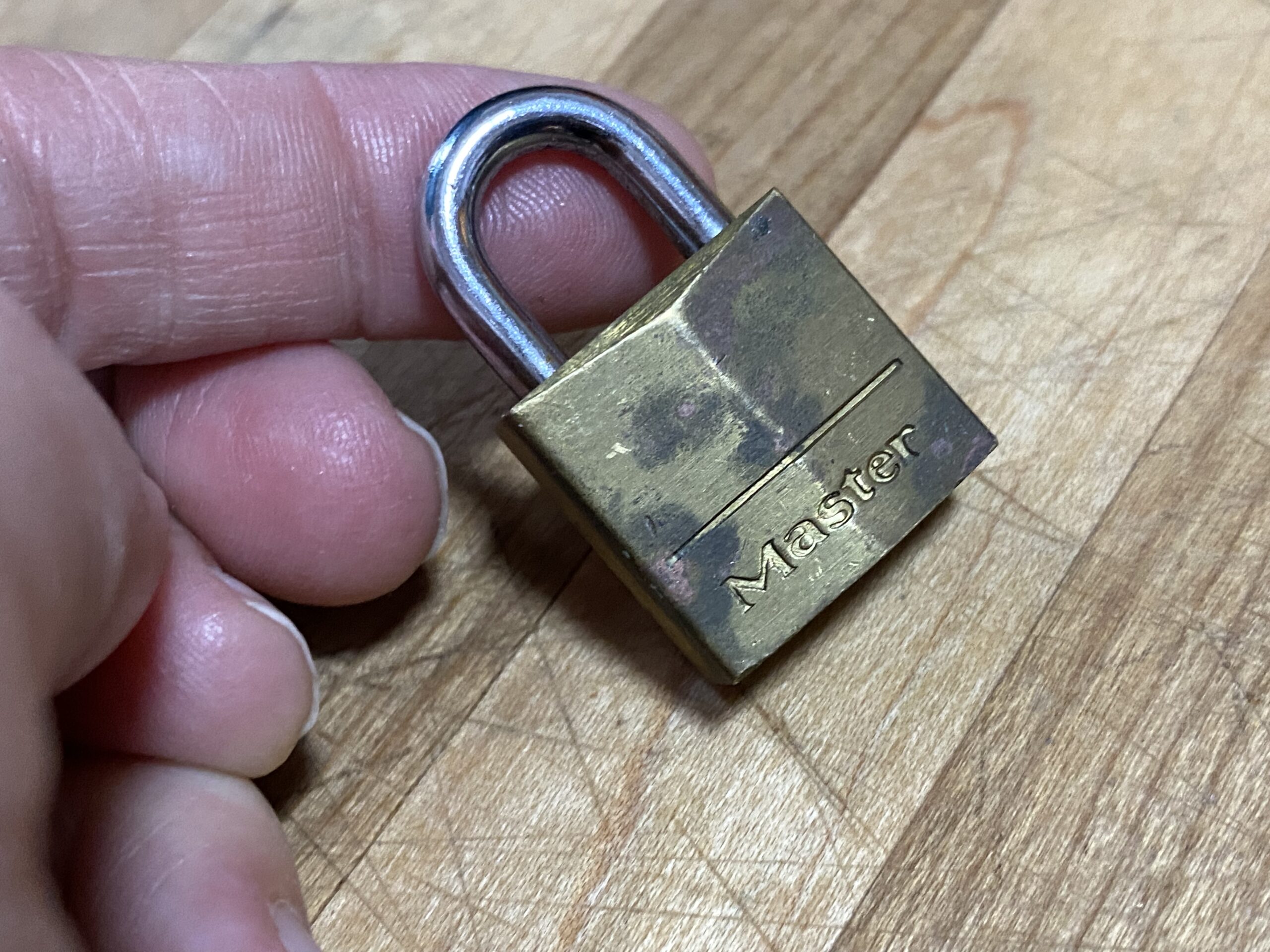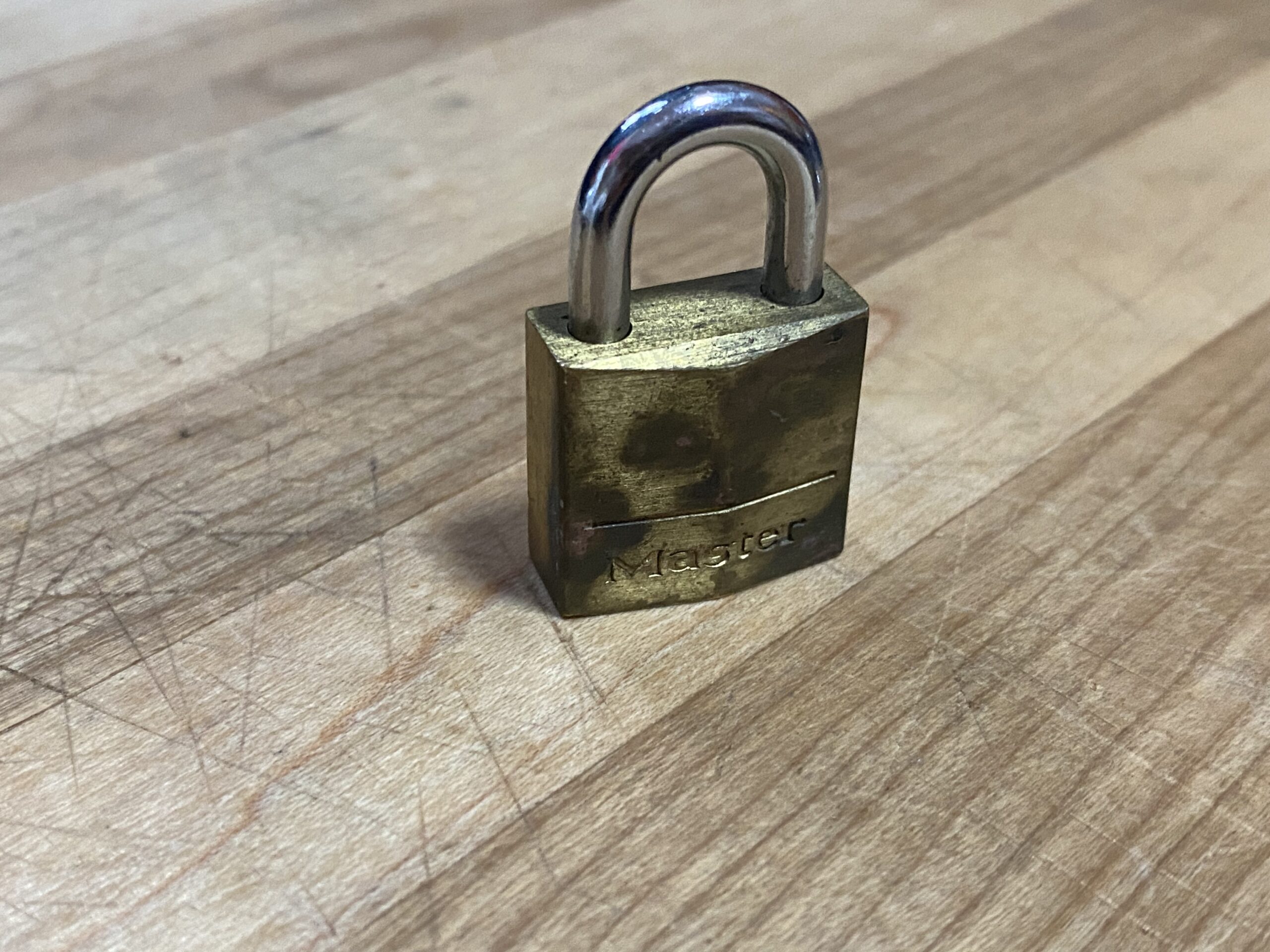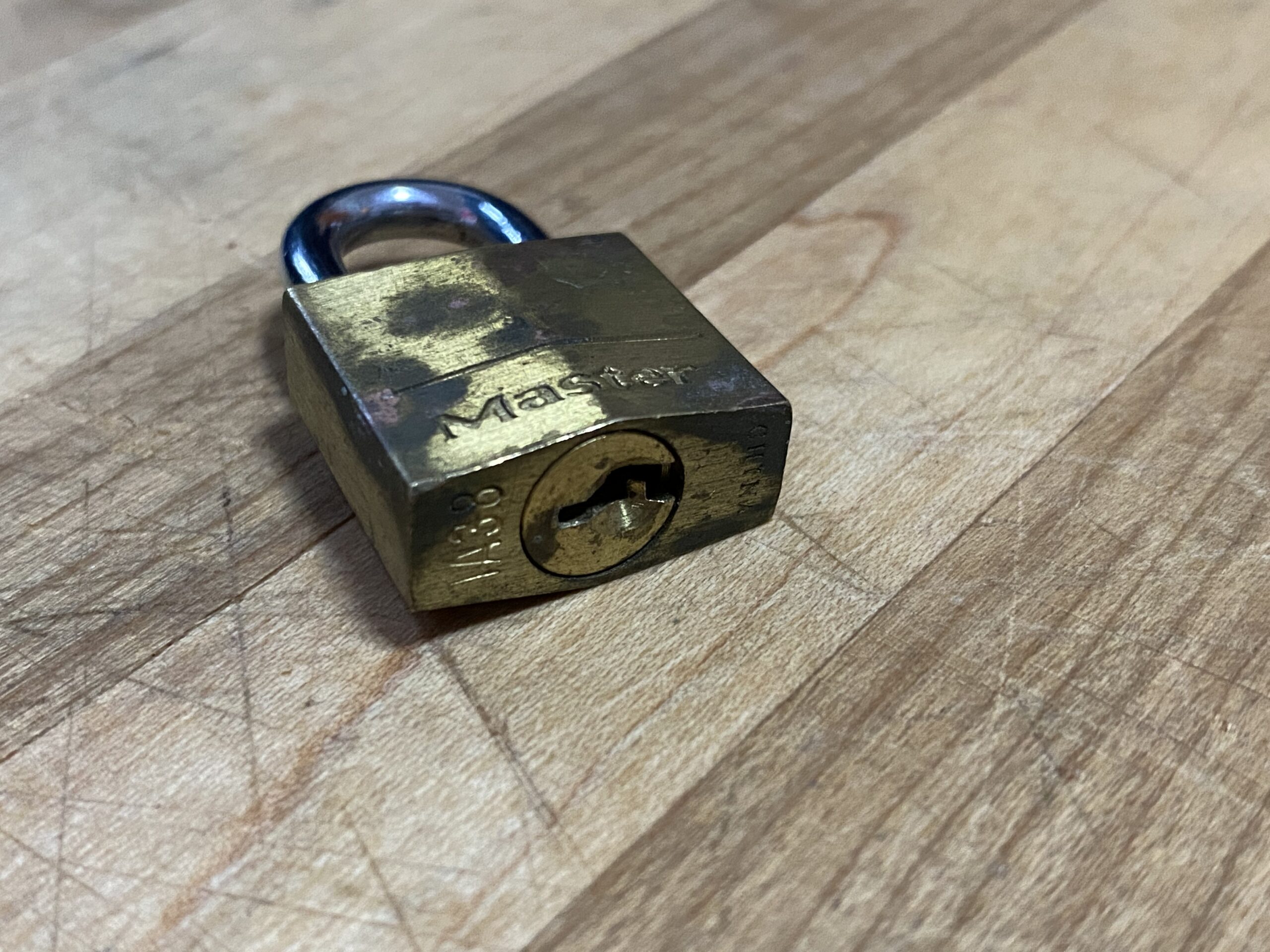Tiny brass Master-brand lock: 31,200 ppm Lead. For context: 90 ppm Lead (& up) is unsafe for kids. Locks are not toys!
 Reading #1) On the brass-colored body of the lock
Reading #1) On the brass-colored body of the lock
60-Second Test
- Lead (Pb): 31,200 +/- 1,000 ppm
- Cadmium (Cd): 121 +/- 46 ppm
- Mercury (Hg): non-detect
- Bromine (Br): non-detect
- Chromium (Cr): non-detect
- Iron (Fe): 2,450 +/- 255 ppm
- Nickel (Ni): 1,382 +/- 180 ppm
- Copper (Cu): 589,100 +/- 2,400 ppm
- Zinc (Zn): 372,900 +/- 2,100 ppm
- Tin (Sn): 2,480 +/- 151 ppm
- No other metals detected in consumer goods mode.
Reading #2) On the silver-colored shank of the lock
60-Second Test
- Lead (Pb): 1,135 +/- 158 ppm
- Cadmium (Cd): non-detect
- Mercury (Hg): non-detect
- Bromine (Br): non-detect
- Chromium (Cr): 30,900 +/- 800 ppm
- Iron (Fe): 45,700 +/- 700 ppm
- Cobalt (Co): 4,665 +/- 462 ppm
- Nickel (Ni): 855,200 +/- 1,700 ppm
- Copper (Cu): 22,500 +/- 500 ppm
- Zinc (Zn): 39,700 +/- 1,000 ppm
- Tin (Sn): 84 +/- 45 ppm
- No other metals detected in consumer goods mode.
For those new to this website:
Tamara Rubin is a Federal-award-winning independent advocate for consumer goods safety and a documentary filmmaker. She is also a mother of Lead-poisoned children. Tamara’s sons were acutely Lead-poisoned in August of 2005. She began testing consumer goods for toxicants in 2009 and was the parent-advocate responsible for finding Lead in the popular fidget spinner toys in 2017. Tamara uses XRF testing (a scientific method used by the U.S. Consumer Product Safety Commission) to test consumer goods for toxicants (specifically heavy metals), including Lead, Cadmium, Mercury, Antimony, and Arsenic. All test results reported on this website are science-based, accurate, and replicable. Items are tested multiple times, to confirm the test results for each component tested. Please click through to this link to learn more about the testing methodology used for the test results discussed and reported on this website.

Never Miss an Important Article Again!
Join our Email List


 Reading #1) On the brass-colored body of the lock
Reading #1) On the brass-colored body of the lock

After reading the April 2022 article on lead on Master locks, is there a locker padlock that is safe to use for a cabinet that kids would touch often?
Thanks, E